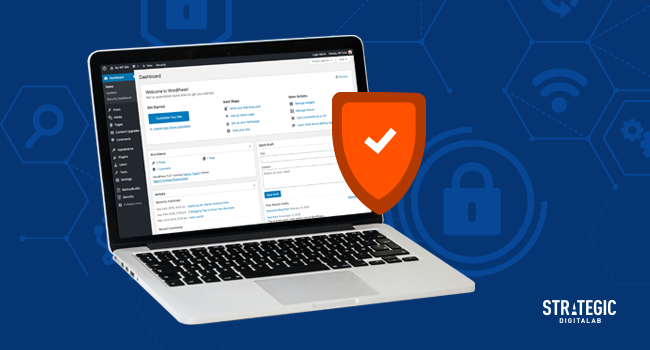Strategic DigitaLab has long embraced work flexibility, even before the COVID-19 outbreak. This work from home policy made it easier for us to adjust to the restrictions of COVID-19, and we are 100% operational even if all of us are in different levels of quarantine in different locations. Our operations are set-up to accommodate remote workers, therefore, we had minimal adjustments — if any — to shifting to a 100% remote workforce.
Allow us to walk you how we ensure business continuity during this COVID-19 pandemic.
Ensuring employee well-being
The coronavirus outbreak is undoubtedly causing a lot of distress to people, and no one is exempt from feeling anxiety or isolation.
First and foremost, the most important part of business continuity is to ensure employee welfare during the crisis — after all, human resources are the most important resource of a company and without this, the company is bound to fall apart. People always come first.
Since early February, our team in Singapore has been working partially via telecommute in order to minimise risking the team to be exposed when taking public transport or during crowded lunch hours. Sometime in March, we start to move into fully telecommuting mode. We’ve also put in place best practices for when going to face-to-face meetings with clients. These include having only one representative per department, and practising social distancing. If employees absolutely have to go to the office, only a maximum of four persons with only one person from each team and each sitting at least one table (two meters) apart are allowed to be in at any one time. We take extra steps to ensure that employees are safe wherever they are, that they are well equipped with protection supplies such as masks and sanitisers.
We keep tabs on one another through virtual calls over lunch and regular group chats on messaging platforms, where we talk about anything but work; and more often, we keep our chat group open to anything anyone wants to share.
Work from home policy
As per our usual practice, work from home is business as usual, where all employees are contactable at all times via our usual channels. Anyone who decides to work from home simply has to notify their supervising manager, HR Manager, as well as the entire team.
Trust and discipline are the foundation of every work from home policy. Still, we set boundaries to ensure that the entire team follows best practices.
Daily WIP calls
Work commences at 9:30 a.m. Every 9:45 a.m., all of us go on a Daily WIP call via teleconferencing. Pre-coronavirus, employees already at the office would converge in the meeting room to do the call, but the meeting was always done via teleconference. Attendance is required. Because we offer work flexibility to all our employees, everyone can join this call regardless where they are: even if they are working from home, or on the way to an early morning client meeting.
During these daily calls, we are able to monitor all our deliverables for the day as well as the status of current projects. It is an opportunity to align, as well as follow-up on projects that need to be completed. The call is very brief and straightforward and lasts only a few minutes.
Daily WIP calls first thing in the morning also sets the tone for the day. Hearing how everyone is working and rushing through their projects also gives the telecommuter a boost to be productive, albeit working from home and not physically surrounded by coworkers.

Project brief calls
To ensure that all projects are approached with the right understanding of the brief, we do project brief calls. These calls are usually led by the assigned project lead, who will fill in everyone on the necessary information for the project.
Project briefs are necessary because they act as the springboard on which everyone in the team can start their work. Project brief calls therefore have to be transparent and informative. When multiple members of the team work from home, it is important to answer everyone’s questions and address everyone’s concerns. These are most efficient during calls so that everyone can learn from each other.
Constant communication
Take note that in working remotely or telecommuting, there needs to be more communication among team members. For us, we put in a conscious effort to speak with each other even if we work in different places and do not have the luxury of being in close proximity to one another.
Constant communication is needed to make sure that everyone is still on the same page. Unlike the Daily WIP calls, which are quick and straightforward, meetings that are regroups are more detailed and last longer. It is a chance to catch up on new details or updates from the client, or to discuss feedback for earlier iterations.
Collaboration and project management tools
With several calls going on, it is important to keep track of everything that needs to be done. Project management software helps us make sure that all our tasks are organised and documented for accountability, so that client work will be delivered on-point and on time. These tools allow us to delegate tasks and collaborate on projects even from different locations. Within the system, each team member has access to the information that they need, who is the point person for each task, etc. Just in case there is some miscommunication along the way, a quick check on the project management software can take the project team back to what needs to be done.
Meanwhile, online collaboration tools like instant messaging and video conferencing apps that are secure allow us to work in real-time. It goes without saying that employees are required to comply with company policy on communication and are made aware of security risks involved in handling business information.
All in all, this set-up, which is flexible for those who work from home, has helped us make a smooth transition into being fully operational during a global pandemic. But more than the profit and productivity this business continuity practices ensure us, this set-up also ensures the safety of our employees. With a work from home policy that has been tried and tested, our employees can rest assured that they can be safe in the comfort of their homes, away from the virus that is plaguing the world.







